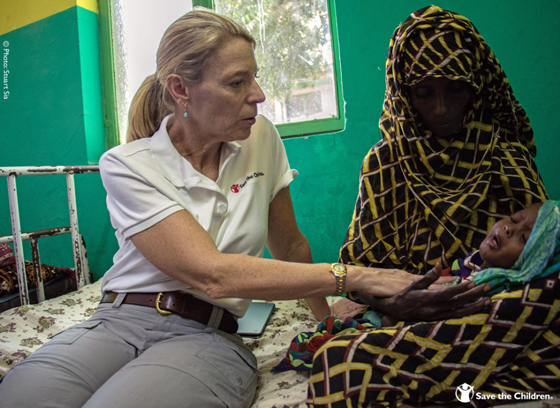Originally posted on Emergency Response by Carolyn Miles
The tiny boy’s chest rose and fell fast as he lay on the thin mattress of the hospital bed, his grandmother by his side. As I watched him struggle, I asked the doctor looking over him what was wrong. His diagnosis was severe malnutrition complicated by a serious case of pneumonia. Pneumonia kills more children under 5 than any other single disease in Ethiopia and, layered on top of a case of severe malnutrition, Mohammed’s little life hung precariously in the balance on the day I met him. This was his second visit to the district hospital in the last few months and his mother and grandmother had traveled over 100 miles to get him there. He is one of 400,000 children in Ethiopia now suffering from severe malnutrition due to lack of food caused by the worst drought in 50 years.
In the United States, El Niño is causing warm spells in the Northeast, flooding in the Midwest and forest fires in California—but its severity and duration this year is wreaking havoc on Ethiopia in the Horn of Africa and threatening tremendous progress made over the last 25 years. Ethiopia is a country I often hold up as an example of what can be done, especially with strong government leadership and partners. Ethiopia has reduced child mortality by two thirds, meeting that element of the Millennium Development Goals several years even before the 2015 target; the vast majority of Ethiopian children are enrolled in primary school; and the country’s innovative health system serves families through clinics in even the poorest communities with more than 30,000 health workers supported by the government. Governments and partners invested in an early warning system that monitors rainfall and soil moisture, which rang the alarm in mid-2015 that a drought was imminent. But alarm bells don’t do much good—and won’t save children’s lives—if no one listens to them.
I met several struggling families on my trip to the Amhara and Afar regions of Ethiopia this week. For many, their cattle had died or been sold off for half their value due to lack of food for the animals. Almost 80% of the population is dependent on rain-fed agriculture, so the failure of three successive rainy seasons has left families with no crops to sell or to eat. Now they are receiving monthly rations and children are slipping from moderately malnourished to severely so, every day. Children have started dropping out of school because they must instead walk for hours to collect the scarce water that is available.
The Government of Ethiopia has mounted a strong response to the drought, vowing that they won’t see the suffering of 1984 repeated. Governments like the US, Norway and the U.K. have also stepped up aid to Ethiopia to provide food, water, animal feed and health services like treatment for malnutrition through Save the Children and other organizations on the ground. But many others haven’t. The sheer scale of the drought means more resources—food and money—must be mobilized now, both from those who have already given and especially from those who have not. There’s no time for delay.
I left the Dubti Hospital that day with the very real worry that Mohammed might not make it through his tremendous struggle against pneumonia and malnutrition. But thankfully he was receiving the medical support he needed. At the same time hundreds of thousands of others were struggling just like him that day, and each day since, often without food or access to medical care.
The warning bell has sounded—we cannot be deaf to it. We cannot wait for more children to suffer before we are moved to act.
